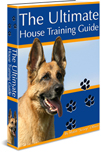You are walking down the street and the next thing you know, your normally loving dog becomes aggressive towards other dogs and people he sees. It’s enough to make you want to keep him inside all the time!
However, there are some ways to deal with leash aggression so you can both get some good quality time and exercise outdoors
Learn to anticipate your dog's behavior before he acts aggressively. If you see something that will trigger him, divert his attention. Tell him to sit or lie down. This will keep his mind off the trigger until it has passed.
If you are about to pass another dog, don’t tense up or pull the least taut. Your pet will be able to tell and he will think that you are scared, so aggression is much more likely. Animals pick up on our signals – just remain calm and relaxed.
Muzzles and gentle leader harnesses can be useful training tools for dogs who lunge. Gentle leaders are designed to keep a dog from lunging, and muzzles will prevent biting. If you use them, make sure to train your dog at the same time. Don't plan on relying on these tools indefinately.
If you have tried to curb leash aggression and your dog still misbehaves during walks, it is time to find a good trainer. You need professional help to stop this at once: not only is it disruptive to your own walks, it is dangerous to everyone and every animal you pass on the sidewalk.
Leash aggression isn’t uncommon, but it is a potentially big problem. Start taking measures to cure your dog of this bad habit before bigger fixes are needed.
The stay command is one of the most useful for your dog. While indicative of a well-trained dog, the stay command can also keep your dog safe in different settings. To help facilitate teaching this command, use treats and praise liberally. SitStayFetch can help you gain even better control over your dog.
To learn to stay, your dog first needs to know how to sit and/or lie down. When he masters this, staying is the next step. Begin by telling him to sit or lie down. As he does this, put your hand out and say, "Stay." Make sure you use a firm yet calm voice.
Your dog may only be able to stay for a second or two at first. No matter how long he stays, remember to praise him and give him a treat. He will be able to stay longer as he practices.
As well teach him the release command so he learns when it is time to get up. "Ok" or "Come" are often used. Again, praise and treats make training easier. Praise and treats help alot when it comes to puppy potty training.
As you work on the stay command, demand that your dog stay for longer periods of time. Don't give him his treat until he performs to your satisfcation. Have him do a little more each time.
Optimal training should last about five to ten minutes at a time. Any more than that will strain your dog's attention span and counteract your efforts.
Another way that dogs are like children is that they have short attention spans! If you require him to train for longer than ten minutes, he is likely to become obstinate and disobedient. Also keep in mind that he'll have to have a lot of practice in order to perfect the command. Repeat "Stay" several times and be prepared to reteach him the command a few times.
Soon, your dog will be able to stay even if you leave the room. Even if you phase out the treats, remember to praise your dog for this accomplishment.
Receive more information on Sit Stay Fetch.






No comments:
Post a Comment